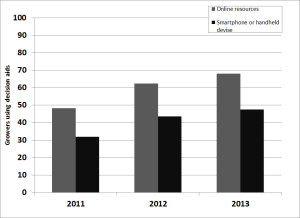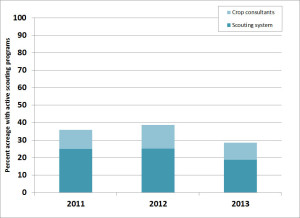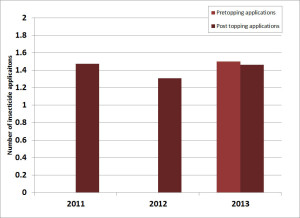How Can We Measure Insect Management Changes in Tobacco?
go.ncsu.edu/readext?254792
en Español / em Português
El inglés es el idioma de control de esta página. En la medida en que haya algún conflicto entre la traducción al inglés y la traducción, el inglés prevalece.
Al hacer clic en el enlace de traducción se activa un servicio de traducción gratuito para convertir la página al español. Al igual que con cualquier traducción por Internet, la conversión no es sensible al contexto y puede que no traduzca el texto en su significado original. NC State Extension no garantiza la exactitud del texto traducido. Por favor, tenga en cuenta que algunas aplicaciones y/o servicios pueden no funcionar como se espera cuando se traducen.
Português
Inglês é o idioma de controle desta página. Na medida que haja algum conflito entre o texto original em Inglês e a tradução, o Inglês prevalece.
Ao clicar no link de tradução, um serviço gratuito de tradução será ativado para converter a página para o Português. Como em qualquer tradução pela internet, a conversão não é sensivel ao contexto e pode não ocorrer a tradução para o significado orginal. O serviço de Extensão da Carolina do Norte (NC State Extension) não garante a exatidão do texto traduzido. Por favor, observe que algumas funções ou serviços podem não funcionar como esperado após a tradução.
English
English is the controlling language of this page. To the extent there is any conflict between the English text and the translation, English controls.
Clicking on the translation link activates a free translation service to convert the page to Spanish. As with any Internet translation, the conversion is not context-sensitive and may not translate the text to its original meaning. NC State Extension does not guarantee the accuracy of the translated text. Please note that some applications and/or services may not function as expected when translated.
Collapse ▲Yesterday, we held our annual tobacco agent training session at the Johnston County Extension Center. I always look forward to sharing our results with this group, learning about insect issues in their counties, and planning winter extension meetings. This year, one of the biggest questions on my mind was how we can best measure the impacts of our education efforts. This question is more pressing now than ever, as our tobacco grower extension program expanded its scope, starting in 2012.
Last year, NC State Cooperative Extension and other extension specialists from tobacco producing states participated in the development of a Good Agricultural Practices (GAP) training program to help growers comply with requests by the purchasers of their crop. Almost all tobacco growers were required by their contracts with purchasing companies to attend GAP training before the 2013 growing season, and in North Carolina,nearly 2100 growers received training.
The insect managment component of GAP training explained the use and important of economic thresholds, provided the thresholds for key tobacco pests, and explained how to scout insect pests in order to determine if they have reached economic threshold. While we’ve always recommended scouting and threshold use in tobacco, last year was the first time that someone else was going to be asking growers about this practice. Therefore I was interested to see if we could measure any trends after the first year of GAP training implimentation.
Each fall, the tobacco extension specialists survey county extension agents to measure production practices. I used these surveys to set a baseline for a few key activities: scouting practices, use of online resources (such as this portal), and number of insecticide applicaiton made per year.
Responses for the last three survey years have covered 41% (2013), 49% (2012), and 59% (2011) of the tobacco acres in the state, so they are fairly representative. However, these practices may be hard to estimate, so these numbers are often the agent’s best approximation for a county. Nonetheless, they are helpful for us to start thinking how we can measure grower responses to our education efforts.

The percentage of tobacco growers using online tools or handheld devises to aid in making management decisions. Figure: Hannah Burrack
The estimated percentage of growers using online tools (such as our Tobacco Thrips Forcasting Tool) has steadily increased over the last three years as has the number of growers accessing these resources on handheld devises. This rings true for my own experience, as a number of growers I work with text me questions and photos rather than emailing them.

The percentage of tobacco acres managed using a pest scouting systems or with the services of a crop consultant. Figure: Hannah Burrack
The estimated number of tobacco acres being actively scouted for pests, however, was low over all three years. This suggests that we in extension have work to do in educating growers about about both how to scout and the benefits of scouting.

The average number of insecticide applications made to tobacco pre and post topping. Note that pre topping applications were only summarized in 2013. Figure: Hannah Burrack
Similarly, the number of insecticide applications made per acre per year did not change between the three years summarized. I started seperating pre topping from post topping applications in the 2013 survey, those data are only available from this year. The number of insecticide applications per season is highly dependent upon local pest pressure, but I expect that this number has room to decrease if scouting and use of economic thresholds increase.
I will continue to track these numbers as we move forward with GAP trainings to see what kind of impact we are actually having.
More information


